The following code produces a directed graph with each node, other than the START and END nodes, having 1 in-degree and 1 out-degree. I'm able to plot the graph in a directed circle as shown here but I would ultimately like to plot this in a straight line. Any help would be greatly appreciated.
library(igraph)
g = graph.data.frame(edges)
V(g)$color = ifelse(V(g)$name == START, "green", ifelse(V(g)$name == END, "red", "light blue"))
plot(g, vertex.frame.color='black', vertex.label.font=1, vertex.label.dist=0.5, vertex.label.cex=0.5, vertex.label=NA,
vertex.size=ifelse(V(g)$name == START, 2, ifelse(V(g)$name == END, 2, 1)), edge.arrow.size=0.1, edge.width=E(g)$weights/250, layout=layout.circle,
main=paste('D6 cell ordering network\n',n_cells,' cells', sep=''))
EDIT: Reproducible example.
START = "D6_EcadSort2250b_TTCACAAGTTTC"
END = "D6_NoSort2250b_ATTATACGCCCC"
library(TSP)
m <- as.matrix(dist_mat)
S <- which(colnames(m) == START)
E <- which(colnames(m) == END)
atsp <- ATSP(m[-c(S,E), -c(S,E)])
head(atsp)
atsp <- insert_dummy(atsp, label = "S/E")
SE <- which(colnames(atsp) == "S/E")
atsp[SE, ] <- c(m[-c(S,E), S], 0)
atsp[, SE] <- c(m[E, -c(S,E)], 0)
# which method is best?
methods <- c("nearest_insertion", "farthest_insertion", "cheapest_insertion", "arbitrary_insertion", "nn", "repetitive_nn", "two_opt")
tours <- sapply(methods, FUN = function(m) solve_TSP(atsp, method = m), simplify=FALSE)
dotchart(sort(sapply(tours, tour_length)), xlab = "tour length")
best_method = row.names(data.frame((which.min(sort(sapply(tours, tour_length))))))
tour <- solve_TSP(atsp, method=best_method)
path_labels <- c(START, labels(cut_tour(tour, SE)), END)
path_ids <- match(path_labels, colnames(m))
node1 = (path_labels)
node2 = (path_labels[2:length(path_labels)])
length(node2) = length(node1)
edges = data.frame(cbind(node1, node2))
edges = edges[complete.cases(edges),]
weights = m[match(path_labels, rownames(m)),match(path_labels, colnames(m))]
n = 2
n1 = n:ncol(weights)
weights = weights[cbind(seq(n1), n1)]
stopifnot(round(sum(weights), 2) == round(tour_length(tour), 2))
edges$weights = weights
m:
D6_NoSort2250b_ATTATACGCCCC D6_EcadSort6000b_CCACACCCAGCC D6_EcadSort2250b_CCGATGATTAGC
D6_NoSort2250b_ATTATACGCCCC 0.000 1975.317 1170.9915
D6_EcadSort6000b_CCACACCCAGCC 1975.317 0.000 1977.8852
D6_EcadSort2250b_CCGATGATTAGC 1170.991 1977.885 0.0000
D6_EcadSort2250b_TGTCTGCTTTAG 1106.524 1689.820 962.0281
D6_EcadSort2250b_TTCACAAGTTTC 1022.989 1762.582 1073.0755
D6_EcadSort2250b_TGTCTGCTTTAG D6_EcadSort2250b_TTCACAAGTTTC
D6_NoSort2250b_ATTATACGCCCC 1106.5238 1022.9888
D6_EcadSort6000b_CCACACCCAGCC 1689.8195 1762.5819
D6_EcadSort2250b_CCGATGATTAGC 962.0281 1073.0755
D6_EcadSort2250b_TGTCTGCTTTAG 0.0000 975.8099
D6_EcadSort2250b_TTCACAAGTTTC 975.8099 0.0000


